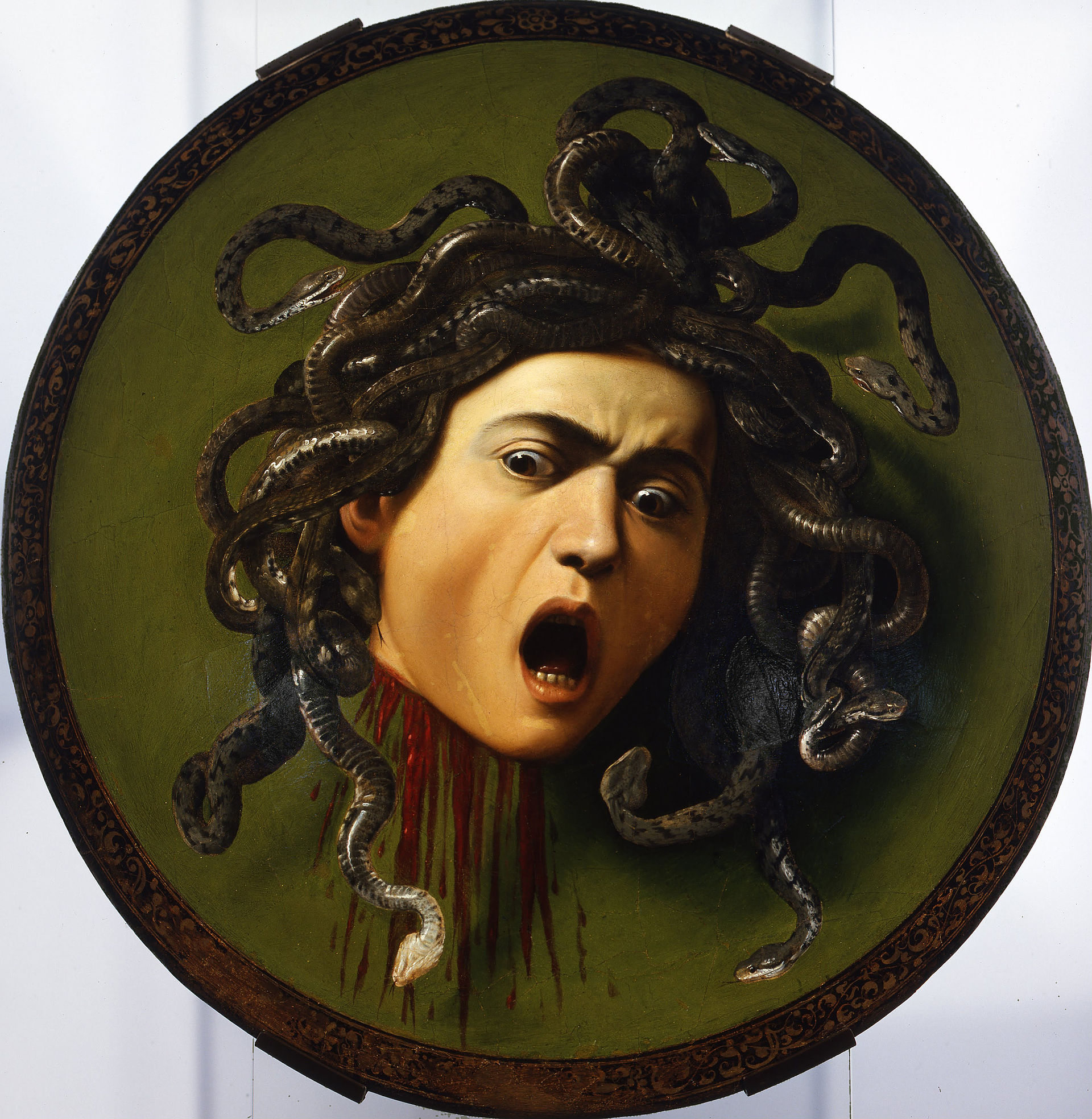30/100
Medusa
-
Artist
Caravaggio
-
Year
1597
-
Culture
Italian
-
Date of Copy
This painting by Caravaggio is lurid and exciting, with that extreme expression and splash of blood. It was definitely a fun one to copy.
Caravaggio was known for dramatically lighting his scenes with a technique called chiaroscuro, and showing scenes of extreme violence and emotion from the bible and mythology. He was very influential and had many followers, who became known as Caravaggisti. He was able to take remote mythological scenes and make them feel real and immediate, as if they were happening in front of you. Rather than the cool, cerebral, idealized figures that dominated the art of his time, his brought drama, blood, darkness, and dirt. His paintings still have huge power today. He was a colorful personality as well, known for getting into street fights and being a possible murderer.
Medusa is the gorgon with snake hair who could turn you to stone with a look. She was defeated by the hero Perseus, who avoided petrification by only looking at her in a bright mirrored shield given to him by the goddess Athena. According to Wikipedia, Caravaggio meant this painting to show the exact moment that Medusa was beheaded by Perseus, shown in the mirrored shield. Interestingly it also says that this may have been a self portrait. He seems to have given a beheaded figure his own face more than once.
I was always interested Medusa's story. She shows up everywhere, even now (she's actually Versace's logo.) She's also become a figure who's written about often in feminist literature. It's unclear if she was always seen as a monster, or if she was a goddess turned into a monster in the storytelling tradition of a patriarchal society. The book Women in the Picture by Catherine McComack has a chapter about monsters which dives deep into the Medusa myth, which I recommend (along with the entire rest of the book.)
Reference image is from Wikipedia. It is now in the Uffizi Museum in Florence.

